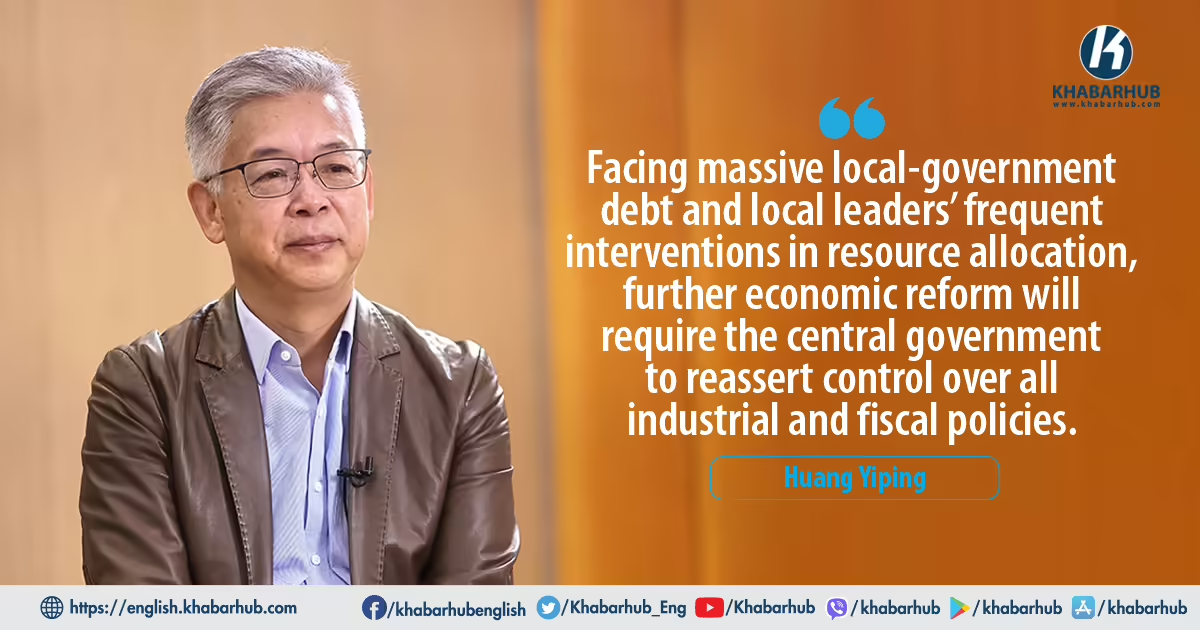Decentralization of decision-making from the central government to local authorities is widely regarded as one of China’s most effective policy reforms of the past four decades.
As the Communist Party’s priorities shifted from class struggle to economic development, decentralization turned out to be a tremendous catalyst for growth.
Compared to the centrally planned system, local governments were better positioned to tailor economic decisions to local conditions.
Local governments were also better placed to facilitate economic activity in an underdeveloped market, including by protecting ownership rights and coordinating business transactions.
Once the reform took hold, subnational governments competed fiercely to deliver rapid economic growth, with studies showing a positive correlation between local leaders’ opportunities for advancement and their jurisdictions’ GDP growth.
Mayors acted as CEOs of municipal economies, and all levels of local government implemented investment-promotion programs, offering a wide range of subsidies to potential investors.
As a result, local governments were crucial to China’s economic takeoff.
The starting point of this dangerous over-leveraging was the mismatch between local governments’ fiscal resources and their spending responsibilities.
But decentralization is not the same as market liberalization, even though it did initially lead to efficiency gains.
The power to allocate resources remains in the hands of government, albeit local rather than national.
Turning municipalities into agencies that fulfilled both governmental and business functions was, to a certain extent, a transitional arrangement.
And it worked for some time, especially during the first three decades of reform, when China’s markets were not functioning properly. But that period is over.
Today, local governments are arguably the greatest source of market distortion and financial risk in China.
For example, municipalities derive a substantial share of their revenue from the sale of state-owned urban land, the proceeds of which go exclusively to local governments.
This is one of the main factors behind China’s ever-growing property bubble and the associated financial risks.
Moreover, local leaders often spend much of this revenue on vanity projects – parks, concert halls, and airports – that are rarely fully utilized.
Local governments also promote the development of industries targeted by the central government. In the case of green energy, for example, they try to attract companies by offering tax reductions, access to subsidized credit, and the free use of land.
But instead of overcoming technological bottlenecks, this localized industrial policy mainly serves to expand production capacity.
Making matters worse, local governments sometimes discourage failing companies from shutting down, out of concern for local employment and living standards.
This approach to “investment promotion” tilts the playing field, distorts resource allocation, lowers the quality of goods, and exacerbates the overcapacity problem.
Perhaps most worryingly, the massive volume of local-government debt, representing 32% of Chinese GDP in 2023, is a major financial risk.
These changes, if implemented, would go a long way toward supporting robust economic growth in China and meeting the Chinese government’s goal of building an advanced socialist market economy.
The starting point of this dangerous over-leveraging was the mismatch between local governments’ fiscal resources and their spending responsibilities.
To make ends meet, cash-strapped local governments adopted innovative revenue schemes, one of which was the local-government investment vehicle.
But while local governments were borrowing from the market, investors considered only the central government’s ability to service debt.
This permitted local governments to borrow and spend at unsustainable rates.
China can pursue further economic reform only if it reins in its local governments.
The recently concluded Third Plenum of the 20th Party Congress reiterated the country’s commitment to allowing the market to play a decisive role in resource allocation, while highlighting the need to remedy market failures.
Regulating local governments’ behavior is a crucial step in this direction.
To that end, the Plenum detailed several reforms, such as the standardization of investment-promotion programs to prohibit improper industrial subsidies, and increased oversight of local governments’ debt management.
But implementing these changes will not be easy. The Chinese government will need extraordinary determination and deft policymaking to lower local-government debt, redistribute spending responsibilities, and manage financial risks.
Three principles should guide this process. First, local governments should refrain from intervening in resource allocation and price formation, which should be steered by markets and enterprises.
Second, the central government should manage all industrial and fiscal policies, without imposing additional spending responsibilities on subnational governments.
Lastly, local authorities should focus more on basic government functions, such as building infrastructure, providing public services, maintaining social order, and correcting market failures.
These changes, if implemented, would go a long way toward supporting robust economic growth in China and meeting the Chinese government’s goal of building an advanced socialist market economy.
(Huang Yiping, Dean of the National School of Development and a professor at Peking University, is a member of the Monetary Policy Committee of the People’s Bank of China)
Copyright: Project Syndicate









Comment